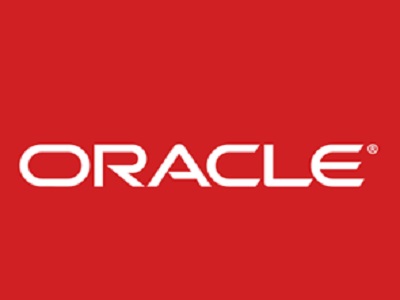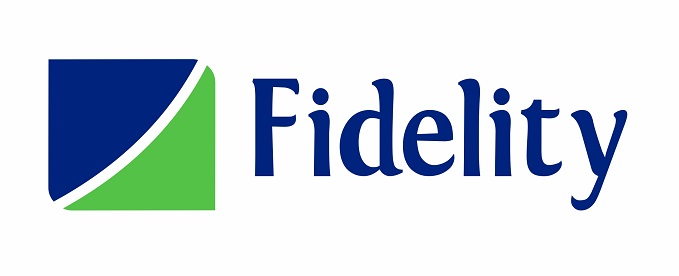General News
Oracle Out With Application-Engineered Systems for Data Center Harmony

The price of running modern data centers is quickly rising, said Tom Pegrume, vice president Oracle Hardware Middle East and Africa.
He added that the astonishing amount of data that companies collect today coupled with a mounting need to convert this information into measurable business value quickly and effectively has seen enterprises fill server rooms with rows of expensive storage stacks working furiously to accommodate an army of data-processing applications.
Given that the amount of data collected by businesses is expected to continue growing by 50 to 70 per cent each year, companies that content themselves to add current-day servers to their existing data center technologies will quickly find themselves in a financial struggle to support the upkeep of their IT infrastructure in the face of this growth, and lacking the floor space to even do so.
The key for businesses looking to remain competitive in an increasingly data-heavy world is therefore a more rapid, more powerful, and more space and cost-efficient storage solution. Andreas Olah, research analyst at IDC in EMEA agrees, saying that “Server density is increasing … driven by the need for lower power consumption and less datacenter floor space required while maintaining performance”.
The problem is that in past years storage systems were primarily designed as general-purpose solutions meant to work with as many applications as possible.
While these presented attractive products to sell to customers operating across multiple industries, this “one size fits all” approach has left businesses with expansive IT infrastructures whose performance is encumbered by limited communication between applications and storage within the stack.
Moreover, because these systems are standardized companies have been allocating a considerable portion of their time and budget on managing their integration into their in-house data centre architecture rather than investing into the growth of their practices.
In reality, each application in the stack is different and should therefore be treated as such.Some require high-performance support, others extreme security measures, while some even have varying operational requirements dependent on the time of year – for example, an energy provider’s performance demands are much higher during the work day than during the quiet late evening hours.
To unlock more value from these tools, businesses will have to move past generic storage appliances and adopt engineered systems that marry application-aware storage solutions with storage-aware applications.
These application engineered systems (AES) drive faster, more powerful IT by automating data management to an unprecedented degree while helping businesses reduce operating costs.
A storage device operating within an integrated AES solution is aware of the requirements that each application it supports will have before their request even reaches the storage controller.
This co-engineering between application and storage leads to much faster query times and data processing.
By running more efficient data compression technologies such as Hybrid Columnar Compression that can only be supported by these engineered systems, businesses can reduce the space required to store their data by up to10 times when compared with the compression rates of non-application aware systems.
Businesses require improved operational agility from their IT, and cannot afford to lose time dealing with bottlenecks in their mission-critical databases and applications.
A major benefit of AES storage systems is their ability to automatically adjust to the changing requirements of data centre applications in real time.
For companies, this pre-integrated interaction between applications and storage means that rather than using their employees’ time to manually treat labour-intensive IT issues they can instead focus on driving innovation and business growth.
Pegrume added that while some businesses may prefer to build and manage their own storage systems, the disconnect between applications and the server will inevitably grow wider with every third party technology added to the stack.
“When one considers that two thirds of enterprise storage costs can be attributed to the time and manpower dedicated to managing these systems, this piecemeal approach risks becoming prohibitively expensive, especially when factoring in the cost of frequent system upgrades, maintenance, and troubleshooting. Not only does a fully-integrated AES solution help businesses bypass some of these costs, but because engineered applications automatically tune themselves to the stack and scale their functionality in response to system requirements they also leave room for significant performance enhancements down the road.
“For businesses, investment in innovation drives progress. In today’s fast-moving economy, the seemingly endless trickle of money companies will spend to tune and manage their data centers would serve them better if reinvested towards achieving measurable market growth.
By providing businesses with fully-integrated data storage and analysis capabilities, application-aware systems like AES, such as Oracle’s ZFS Storage ZS3, give them the self-managing IT solution they will need to reduce their long-term IT investment and focus on achieving success in their respective fields,” he said. Furthermore, due to the dynamic relationship between application and software within these stacks, businesses will also benefit from dramatically improved data processing capability and speed.
General News
Cellulant Taps Freddie Oduro to Lead Enterprise Payments Expansion in Ghana

Cellulant, a leading Pan-African payments company enabling seamless digital transactions across Africa, has appointed Mr. Freddie Oduro as its new Country Manager for Ghana.

Mr. Freddie Oduro, New Country Manager for Ghana.
Freddie’s appointment is a key step in Cellulant’s broader strategy to deepen its presence in priority markets by accelerating the acquisition of in-country enterprise businesses and strengthening its position as the payments partner of choice in Africa.
Freddie brings over a decade of commercial and strategic leadership experience in the telecommunications and financial services sectors, with expertise in sales, business operations, and market expansion.
In his new role, he will drive merchant acquisition, strengthening partnerships, oversee collections and payout operations, while ensuring strong internal controls and regulatory compliance.
He joins Cellulant from Payaza and previously served as Sales Director at Cellulant, where he helped significantly expand the company’s footprint in Ghana.
Cellulant has been powering payments in Ghana for leading brands in sectors like e-commerce, utilities, oil and gas and retail, helping them offer their customers a wide range of secure digital payment options.
“We are happy to welcome Freddie back to the Cellulant family,” says Richard Gesimba, Chief Revenue Officer at Cellulant. “Ghana remains a critical market for us, with immense potential driven by rising digital payments adoption.
“As we sharpen our focus on in-country enterprise customers, Freddie’s leadership and industry insight make him the ideal person to steer our Ghana operations.”
The appointment comes at a transformative time for the company. Following a strategic shift between late 2023 and early 2024, focused on streamlining operations, doubling down on enterprise payments, and strengthening customer intimacy, Cellulant achieved profitability in 2024 and continues to build on this momentum.
The company now processes close to 4.5 million transactions daily for businesses across Africa, reinforcing its position as a fintech leader.
“I am honoured to return to Cellulant and lead the Ghana team at such a defining moment,” says Freddie, Country Manager for Cellulant Ghana. “Ghana presents a tremendous opportunity.
“We will ramp up our efforts to sign on more local merchants, strengthen our compliance and control frameworks, and introduce innovative solutions like Tingg Edupay, our automated school fee management solution that eliminates reconciliation delays by validating payments in real time and instantly updating student accounts.
“We will build on Cellulant’s strong foundation to deliver real value, reliability, and economic impact.”
Ghana’s digital payments sector continues to grow steadily, supported by increased mobile money usage and a progressive regulatory environment. Between January and October 2025, the value of mobile money transactions hit about GH¢ 3.6 trillion, up sharply from GH¢ 2.37 trillion in the same period of 2024.
Registered mobile money accounts now exceed 79 million, demonstrating strong consumer and business confidence in digital financial services and in turn creating many opportunities for payment innovation.
This leadership appointment underscores Cellulant’s commitment to building a resilient, high-performance organisation geared towards playing a pivotal role in the next era of Africa’s digital economy.
Looking ahead to 2026, Cellulant plans to further enhance the user experience on its payment platform, Tingg, and expand its footprint across Ghana.
General News
Top Nigerian Startups Secure Funding Boost @ iHatch Demo Day Awards

Nigeria’s startup ecosystem received a fresh injection of momentum as top emerging ventures secured funding and investor attention at the iHatch National Demo Day, where Interface Africa clinched the highest prize of $15,000.

The 4th cohort of the NITDA–JICA-backed accelerator brought together founders, policymakers, and venture stakeholders in Abuja, showcasing innovations ranging from clean-energy financing and digital food marketplaces to next-gen fintech tools.
The startups went rounds of running through state-level selections and regional competition. iHatch was established in 2021 as a strategic partnership to create an enabling environment for young Nigerians to develop and scale their innovative solutions.
The iHatch National Demo Day (4th Cohort), is an initiative by NITDA and JICA which provides a clear pathway for homegrown talent to contribute significantly to economic diversification and digital transformation.
After rigorous selection processes, the top founders converged to pitch their innovations, recognised the standout performers, which are:
Interface Africa with $15,000, the firm is driving Nigeria’s clean energy transition by enabling structured and affordable solar financing.
Ahioma with $12,000, the firm enhances food accessibility with a digital marketplace connecting consumers directly to trusted vendors.
Linia Finance with $10,000, the firm is helping Nigerians take control of their finances with tools for budgeting, tracking, and smart money planning.
Chapta got a laptop reward. They delivering an offline-capable school application ensuring consistent, accessible learning for students everywhere.
Softdrop also got a laptop reward, they solve logistics challenges through a modern delivery platform designed for speed, convenience, and efficiency.
General News
Fidelity Bank to Host Virtual Masterclass on New Tax Law

Fidelity Bank Plc, a leading financial institution, will host a free virtual training on the Nigeria Tax Act 2025 (NTA) as part of its commitment to helping small businesses prepare for the upcoming legislation.

Fidelity Bank
The masterclass is scheduled for 10:00 AM (Nigerian time) on Friday, 12 December 2025. It will provide participants with clear insights into changes in the tax framework, the impact on income and business operations, and practical steps to avoid penalties in 2026.
Attendees will also learn strategies to stay ahead in an evolving regulatory environment.
The Nigerian government enacted major tax reforms on 26 June 2025 when President Bola Ahmed Tinubu signed four tax bills into law.
These Acts will take effect on 1 January 2026 and represent a significant overhaul of the country’s tax system.
The reforms aim to modernize and harmonize Nigeria’s tax framework, improve revenue generation, broaden the tax base, and create clearer rules for individuals, businesses, and government agencies.
“Our decision to host this masterclass reflects our commitment to empowering businesses with the right information ahead of the commencement of the new tax regime.
“Information is money and a well-informed business owner is already steps ahead in the race to success.
“This is why we are bringing experts to provide accurate details and demystify the tax act,” said Osita Ede, Divisional Head, Product Development, Fidelity Bank Plc.
Interested participants can register via https://bit.ly/2026TaxLawMasterclass .

 Telecom3 days ago
Telecom3 days agoMinister Claims Bandits Exploit Poor Network, Bounce Calls Off Multiple Towers

 E-Financial3 days ago
E-Financial3 days agoFIRS says MOU with DGFIP Won’t Compromise Nigeria Tax Data Sovereignty

 General News3 days ago
General News3 days agoTop Nigerian Startups Secure Funding Boost @ iHatch Demo Day Awards

 Telecom3 days ago
Telecom3 days agoCBN, NCC to Launch Short Code for Swift Consumer Complaint Resolution

 Telecom3 days ago
Telecom3 days agoGoogle.org Backs CyberSafe’s Resilio Africa to Shield 2m People from Cyber Threats

 Broadcasting3 days ago
Broadcasting3 days agoNCC Blocks Piracy Sites as Nollywood Faces Rising Digital Theft

 Broadcasting3 days ago
Broadcasting3 days agoFour Must-Watch African Films Debut Free on Glo TV

 Telecom3 days ago
Telecom3 days agoNASENI Launches FutureMakers to Inspire Innovation in Young Nigerians



























